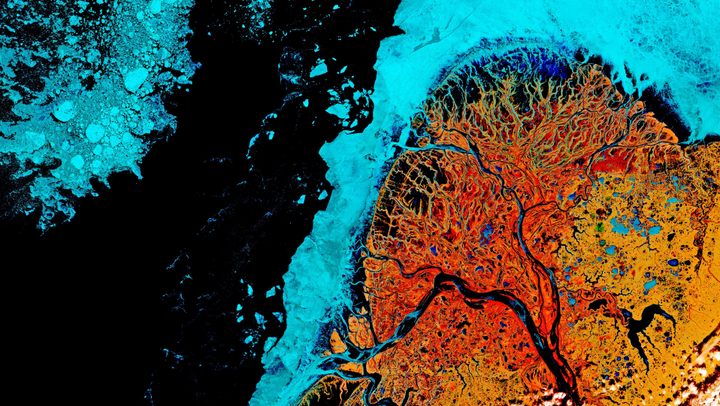
Why Does the Yukon Delta Always Look So Trippy?
The Alaska delta, one of the world’s largest, is a ‘mosaic’ environment best visualized with a psychedelic palette.
A slice of brain, stained for scrutiny under the microscope. The cross-section of a head of broccoli, run through a funky filter. Or is what you see a dynamic, subarctic environment that researchers love to study, especially when it is rendered in a carnival of unnatural colors?
The Yukon-Kuskokwim Delta, in southwestern Alaska, is one of the world’s largest deltas. The state’s two biggest rivers empty separately into the Bering Sea here, and the landscape between them is pocked with thermokarst lakes, shallow depressions created as permafrost melts and sags.
The northern section of the delta, where the Yukon River meets the sea, fans out in a dizzying network of waterways, and tundra gives way to marsh, meadow, and shrubland dominated by willow. While all of the massive delta is of interest to science, it’s this fan-shaped grand finale of the Yukon that’s been showcased in numerous, eye-catching false-color images over the past two decades (you can even buy prints of them on Etsy).
Unlike photographs, false color satellite images are data-crunched representations of different wavelengths of light that include those not visible to the naked eye. For landscape images such as those of the Yukon Delta, instruments on satellites passing overhead collect measurements of different bands on the electromagnetic spectrum. Data from these bands, when combined, can reveal the landscape in a new way. For example, combining the measurements of near infrared, and visible red and green, light can map the distribution and health of vegetation. That’s because stressed plants absorb or reflect various wavelengths of light—visible and non-visible—differently than healthy plants do.
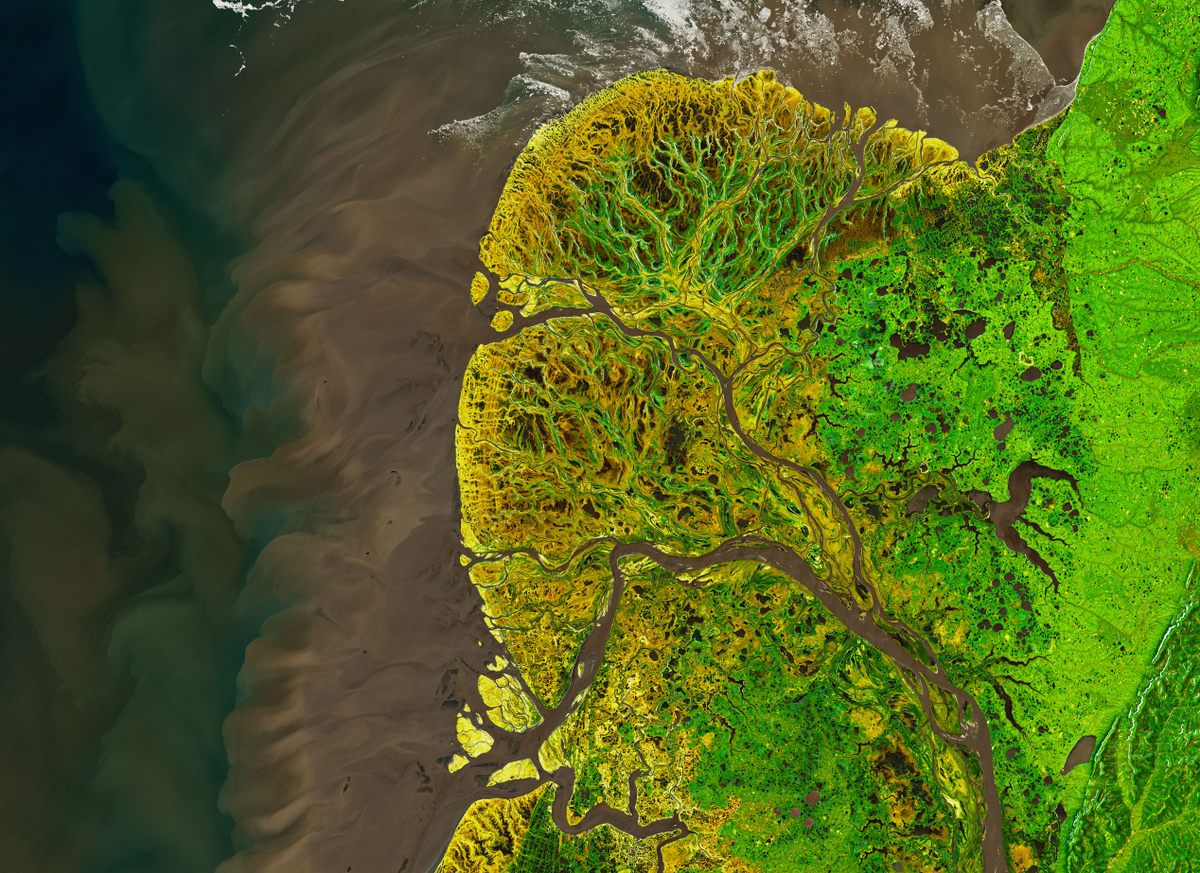
An enormous range of information, from the depth of a body of water to hotspots lingering after a fire, can be gleaned from combining these measurements, and then visualizing them within the visible spectrum with these false-color images.
“False-color infrared imagery like these examples normally include two infrared bands and one visible band,” says Matt Macander, senior scientist at Alaska-based scientific research and support firm ABR. Macander and his colleagues have done extensive mapping, modeling, and imaging work, including of the Yukon Delta. He says false-color imagery is especially good at highlighting specific features, such as open water, ice, shrubs, and bare ground, in complex environments. “The Yukon Delta is a wild patterned mosaic,” he adds. “There is a ton of information in infrared bands that is not present in the visible.”
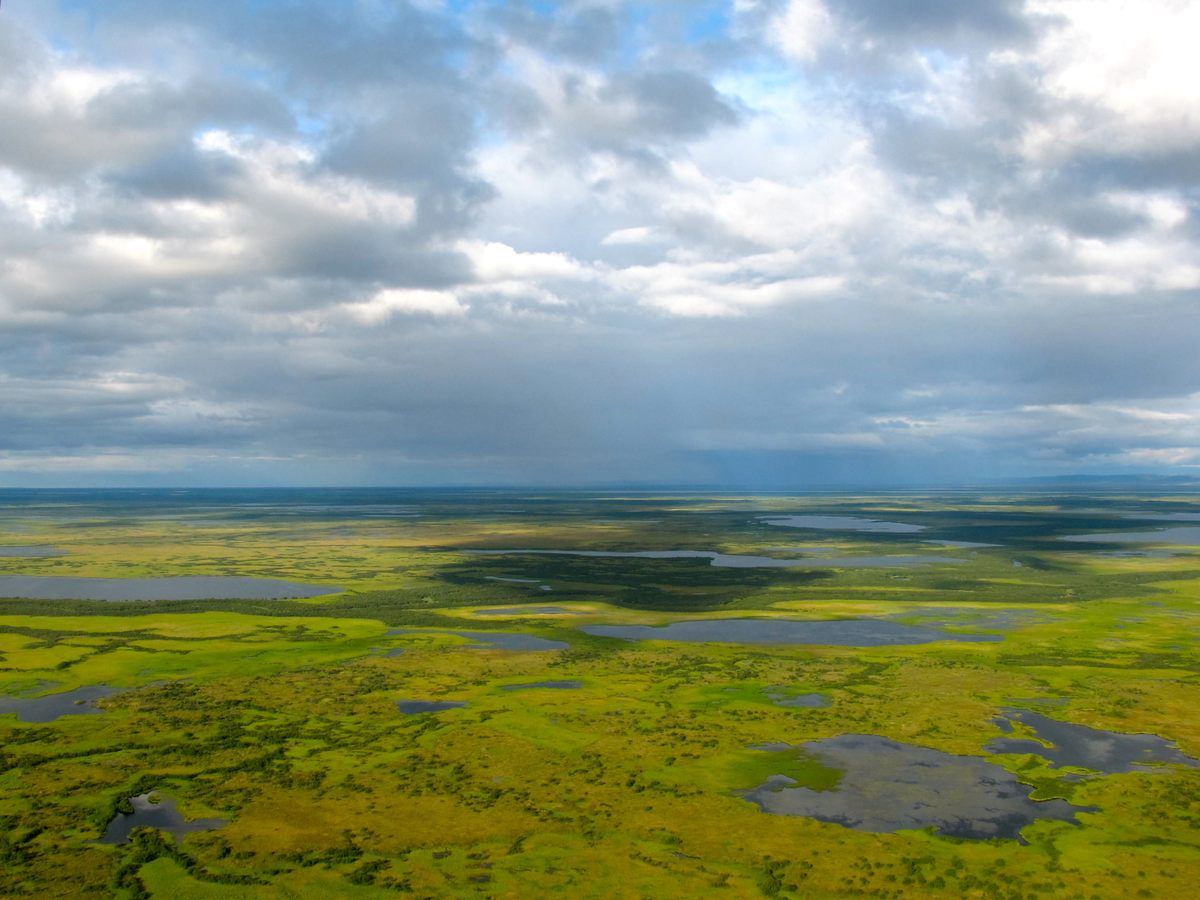
The delta attracts such scientific interest because it’s a large transitional area between land and water, freshwater rivers and salty sea, tundra, forest, and wetland. It’s also prone to dramatic seasonal shifts, from winter snow and ice to spring flooding—and an impressive load of sediment carried into the Bering Sea—followed by rapid plant growth in summer. False-color images show all these varied, dynamic elements with far greater detail than a natural-color image ever could, making it valuable proving grounds for testing large-scale hypotheses, including modeling permafrost melt and climate change-related flooding patterns.
Macander says false-color images can have value beyond research for the government agencies and other entities that produce them, including getting the public excited about science. “For these outreach applications, someone probably tweaked the image color balancing knobs,” he says. “For scientific purposes the values in the imagery are meaningful but you can make pretty pictures without worrying about that.” We agree, and here are some of our favorite, frame-worthy views of the delta.




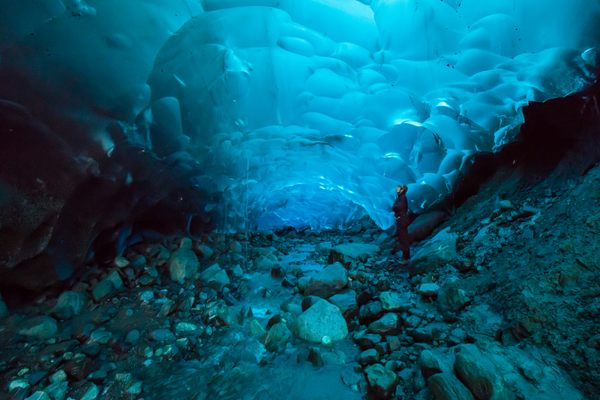



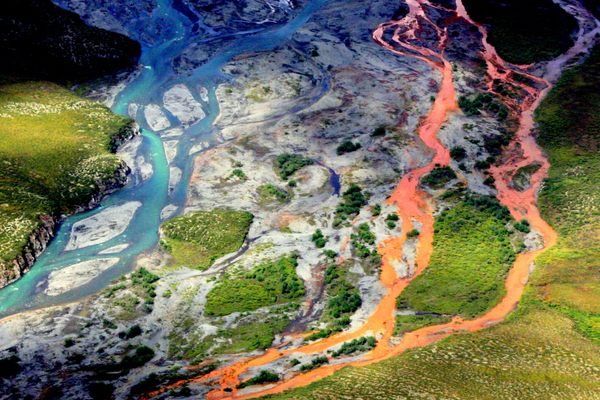
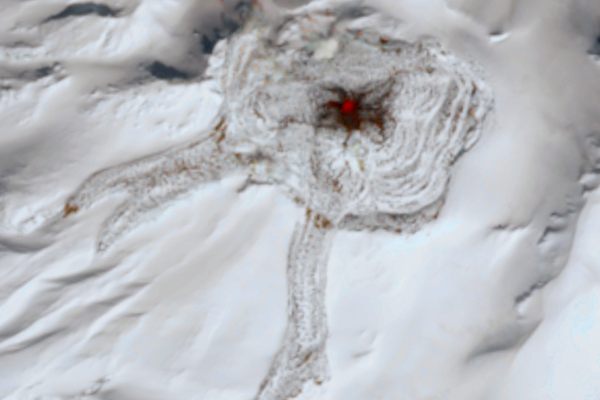























Follow us on Twitter to get the latest on the world's hidden wonders.
Like us on Facebook to get the latest on the world's hidden wonders.
Follow us on Twitter Like us on Facebook